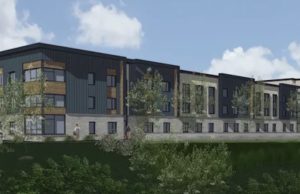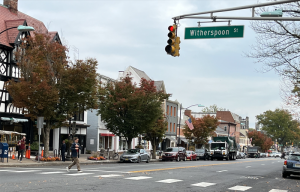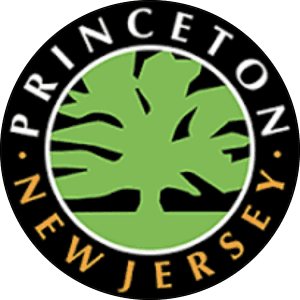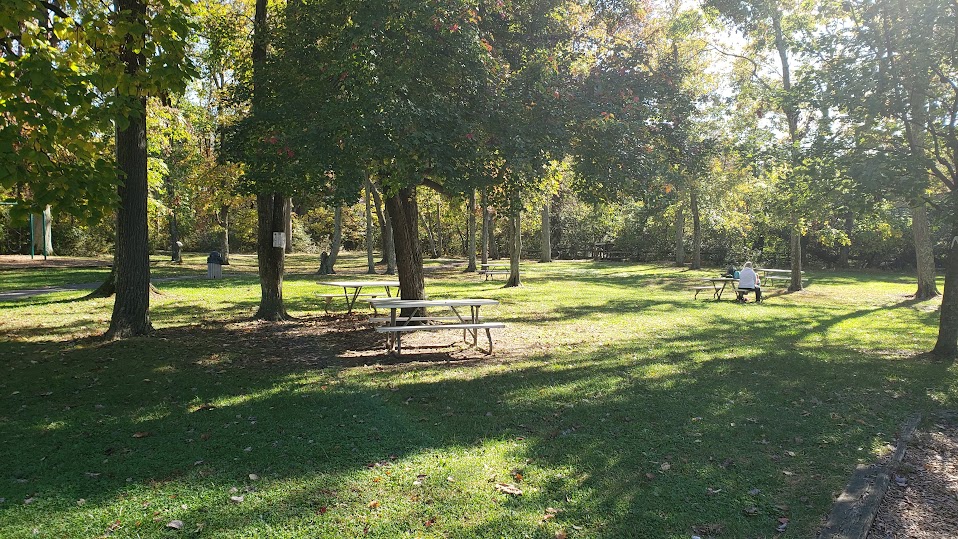 On Tuesday, June 10th, most New Jerseyans are invited to the polls to cast their votes in the primary election. Yes, you read that right – Despite what most believe, Primary Day is not just a day registered Democrats or Republicans vote, as Unaffiliated New Jerseyans have the opportunity to vote as well. Though there are only elections held to determine the Democrat and Republican candidates for each role, Unaffiliated voters can declare in advance or at the polls, to help determine who will be on the ballot. And with contests on both sides of the aisle, each and every vote cast can be impactful.
On Tuesday, June 10th, most New Jerseyans are invited to the polls to cast their votes in the primary election. Yes, you read that right – Despite what most believe, Primary Day is not just a day registered Democrats or Republicans vote, as Unaffiliated New Jerseyans have the opportunity to vote as well. Though there are only elections held to determine the Democrat and Republican candidates for each role, Unaffiliated voters can declare in advance or at the polls, to help determine who will be on the ballot. And with contests on both sides of the aisle, each and every vote cast can be impactful.
Who is running and what’s at stake? We share information here about every candidate on the ballots, as well as how you can take advantage of your right to vote.
SETTING YOURSELF UP TO VOTE
In order to vote in the Primary Election, you must be registered by 8pm on May 20th. You can do this either in-person or online. Every U.S. citizen, that has been a resident of their New Jersey county for at least 30 days before the election and will be at least 18 on or before Election Day is eligible to vote. If unsure of your registration status, you can always check here.
Once registered, decide if you’re going to vote in-person or Vote-by-Mail. If by mail, you must register separately for that. It can be done through the mail by June 3rd, or in-person by June 9th @3pm. You will then receive a ballot to cast your votes by mail, which you can drop into a Secure Drop Box at numerous Mercer County locations, or send back by mail with a postmark dated by Election Day.
Voting in person is expanded again this year, offering nearly one week to cast your ballot. Early Voting will be offered at seven locations in East Windsor, Hamilton, Princeton, Ewing, Lawrence, Trenton and Pennington. Anyone can vote early at any location. The sites will be open at 10am June 3rd through June 8th, closing at 8pm every day except Sunday, at 6pm.
On Election Day, you must go to your registered polling site, indicated on the sample ballot mailed to your home or found here. Election Day hours are June 10th from 6am until 8pm.
HOW THE NJ PRIMARY ELECTION WORKS
New Jersey has a closed primary system, which means you can only vote for the nominees that are in your party. In this state, the Primary Election system includes Democrats and Republicans. Those registered with other official parties are unable to vote.
However, if you have registered “Unaffiliated,” (which used to be called Independent), you are able to weigh in as well, with one small catch. You will need to declare as a Democrat or Republican for the Primary Election in order to vote and can only vote for that one party. This is an important opportunity, especially in counties like Mercer where there are some races with only one-party candidates.
Unaffiliated voters wishing to Vote-by-Mail can call the Superintendent of Elections (609-989-6750) and declare a party, then apply to get the appropriate ballot sent to them. The cut-off date for party declaration to Vote-by-Mail is June 3rd. Unaffiliated voters can also vote in-person simply by walking into the polling site and telling them you want to affiliate. It’ll be handled on the spot, and you can cast your vote.
Then, you can return to being Unaffiliated. It is essential that you wait for the votes to be certified before you reset your registration back to Unaffiliated, or your vote will not count. After July 22nd, you can submit a new declaration form to the county, to revert your official registration back to Unaffiliated.
WHO IS ON THE BALLOT
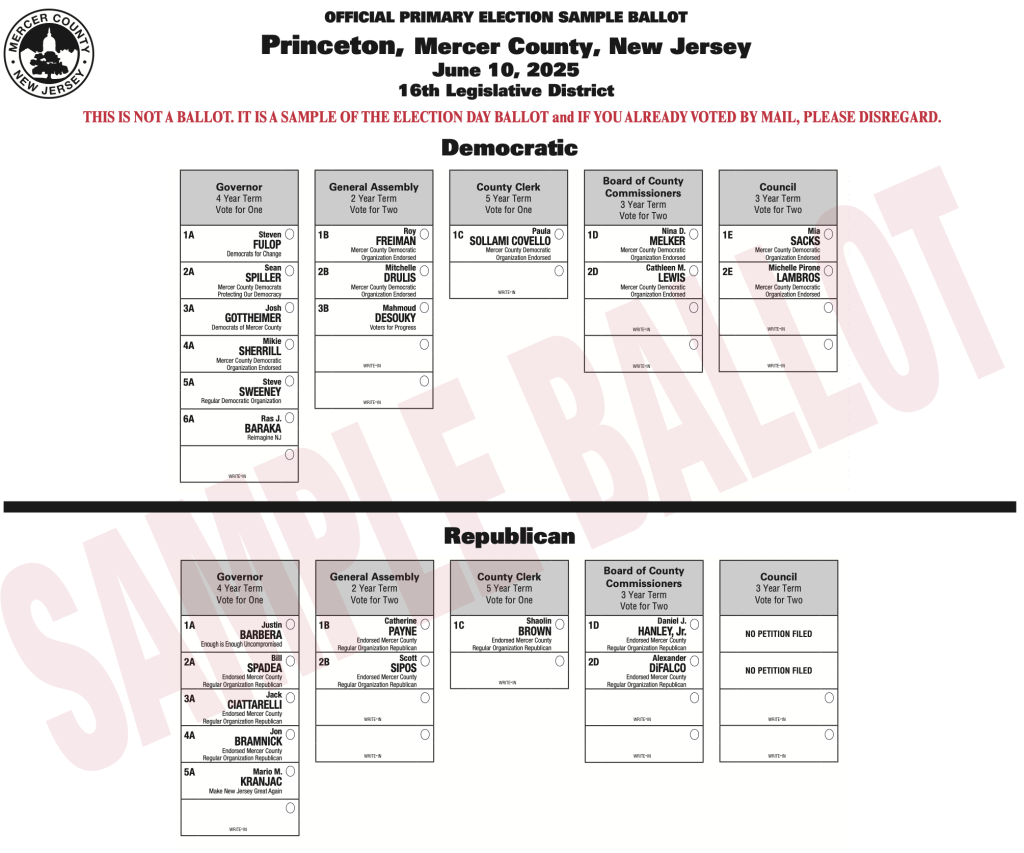 This year in New Jersey, Governor Murphy’s term limit is up, so a gubernatorial race is underway. We are detailing all of those candidates in a separate article, which you can find here.
This year in New Jersey, Governor Murphy’s term limit is up, so a gubernatorial race is underway. We are detailing all of those candidates in a separate article, which you can find here.
Additionally, all Assembly seats are up statewide. That means that voters will choose two Assembly people to lead them in each district, including Princeton’s District 16. There is some contest for those seats, which we will further explain. County Clerk, Board of County Commissioners and Princeton Council also have open seats this election, however there is no contest in the Primary, as there are equal or fewer candidates running per party as the number of eligible open seats.
ASSEMBLY, NJ DISTRICT 16 DEMOCRATIC CANDIDATES
The NJ Assembly works alongside the Senate as the legislative branch of NJ’s government. All 80 seats are up for election every two years.
In District 16, Roy Freiman has held a seat since 2018 (when he replaced Jack Ciattarelli, who ran for governor). In 2023, Freiman was joined by fellow Democrat Mitchelle Drulis (when Andrew Zwicker left the Assembly for the Senate). Both are seeking re-election. Democrat Mahmoud Desouky has also thrown his hat into the race, hoping to take one of the two seats. We’ll share their visions for helping District 16, in alphabetical order.
 Mahmoud Desouky is a family business owner. A South Brunswick native and 2024 Rutgers University graduate, he built and manages a plumbing and heating company. Desouky seeks to protect and advance free speech, wants to ensure an affordable cost of living throughout the state and aims to help NJ stay on track for 100% clean energy by 2035. He believes his generation needs a seat at the table to address the struggles of District 16 voters.
Mahmoud Desouky is a family business owner. A South Brunswick native and 2024 Rutgers University graduate, he built and manages a plumbing and heating company. Desouky seeks to protect and advance free speech, wants to ensure an affordable cost of living throughout the state and aims to help NJ stay on track for 100% clean energy by 2035. He believes his generation needs a seat at the table to address the struggles of District 16 voters.
“I understand the challenges of navigating New Jersey’s regulatory environment, balancing budgets, creating jobs, and staying resilient in an unpredictable economy. That perspective is sorely lacking in our legislature. I don’t just talk about supporting small businesses—I live it every day,” Desouky explains. “I decided to run because I believe our communities deserve leadership that is present, responsive, and bold in advocating for real change. While incumbents often benefit from name recognition, I bring a new energy grounded in grassroots organizing and a deep commitment to the people of District 16. As someone who grew up here and is actively involved in both civic and business life, I’ve seen firsthand how working families, immigrants, and young people continue to be overlooked in our political system. I’m not running to maintain the status quo—I’m running to challenge it.”
Desouky adds, “Unseating incumbents requires more than just opposition—it requires offering a vision that resonates with everyday people. My campaign is about listening to residents, showing up in every neighborhood, and advocating for policies that directly impact their lives—affordable housing, small business support, youth opportunities, and environmental protection. Voters are ready for a representative who isn’t tied to political machines but is grounded in lived experience, community service, and a determination to fight for what’s right.”
 Mitchelle Drulis spent more than a decade working in NJ politics before becoming the Political Director that helped Tom Malinowski flip control of U.S. District 7. After a few years working as the District Director for Malinowski’s office, she became a first-term Assemblywoman. Drulis seeks to keep her seat in the Assembly to continue working for her constituents.
Mitchelle Drulis spent more than a decade working in NJ politics before becoming the Political Director that helped Tom Malinowski flip control of U.S. District 7. After a few years working as the District Director for Malinowski’s office, she became a first-term Assemblywoman. Drulis seeks to keep her seat in the Assembly to continue working for her constituents.
“Before my election to the Assembly, I spent many years as a legislative staffer in both the NJ Assembly and Congress—an experience that taught me that progress and fairness require persistent effort. My first term is an example of my ongoing fight for the future of New Jersey families. Although I never anticipated running for office, my work in Trenton has only strengthened my resolve to fight to make living, raising a family, and retiring in New Jersey just a little bit easier. I have worked on critical initiatives like Stay NJ and ANCHOR, which provide much-needed property tax relief for renters, homeowners, and our seniors, ensuring that New Jersey remains affordable for all. At the same time, I am proud to have served as the prime sponsor of Assembly Bill A3446—the Freedom to Read Act—an essential measure protecting New Jersey from extreme sweeping book bans,” Assemblywoman Mitchelle Drulis shares.
She continues, “In the General Assembly, we stand as the first line of defense against the chaos and overreach from Washington, DC. Determined to uphold both fairness and freedom, I have introduced legislation to ensure our public schools are funded, establish a reproductive health travel advisory, protect the environment, and combat social media fraud. I have also cosponsored legislation to fortify voting rights, defend access to health care, and enhance workers’ protections. I remain steadfast in my commitment to reduce costs, support working families, and invest in our children’s future.”
 Roy Freiman was an executive at Prudential Financial before being elected to the Assembly. His skills as VP of Strategy and Analytics were ones he says transferred to his elected office, where he worked to help NJ families through tax relief and new job creation. He hopes to be elected to his 4th terms in the Assembly.
Roy Freiman was an executive at Prudential Financial before being elected to the Assembly. His skills as VP of Strategy and Analytics were ones he says transferred to his elected office, where he worked to help NJ families through tax relief and new job creation. He hopes to be elected to his 4th terms in the Assembly.
“As a state representative, I draw on my years of experience to tackle the issues that truly matter to our community. We face ongoing challenges, and every session presents new priorities for working families. My experience in the Assembly and as a former business leader has equipped me to effectively respond to the challenges New Jersey families face, especially in light of federal spending cuts from this administration. We must ensure our schools are funded, that we continue to fund Stay NJ and ANCHOR, which will provide historic property tax relief for our renters, homeowners, and seniors, and we are working to lower healthcare costs for New Jersey families,” states Assemblyman Roy Freiman.
Freiman additionally shares, “A key focus of mine right now is holding the pharmaceutical middleman companies (PBMs) accountable for reducing costs and expanding access to prescription drugs. There is still much more work to be done in this area, and with another term, I will push forward on efforts to keep New Jersey affordable and protect our residents from the challenges coming out of Washington.”
ASSEMBLY, NJ DISTRICT 16 REPUBLICAN CANDIDATES
NJ’s 16th Legislative District includes Princeton, as well as municipalities in Hunterdon, Middlesex and Somerset counties. Republicans have not held a State Assembly seat in this district since Jack Ciattarelli left in 2018. There is no contest in the Republican Primary race, as two candidates are vying for two open seats, but we will introduce them here. A vote for them in June signifies confidence in their campaigns.
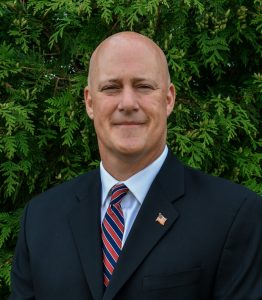 Scott Sipos is serving his 2nd term on the Raritan Township Committee and served as the township’s Mayor in 2024. As a committeeman, he has focused efforts on improving emergency management capabilities, garnering grant funding from all levels of government and improving public safety. He is a teacher, who served for years as his union’s president, where he led many negotiations.
Scott Sipos is serving his 2nd term on the Raritan Township Committee and served as the township’s Mayor in 2024. As a committeeman, he has focused efforts on improving emergency management capabilities, garnering grant funding from all levels of government and improving public safety. He is a teacher, who served for years as his union’s president, where he led many negotiations.
 Catherine Payne is currently Deputy Mayor of Hillsborough. She is also an IT/Operations professional, working throughout her career in both the public and private sectors to modernize and make their systems more efficient.
Catherine Payne is currently Deputy Mayor of Hillsborough. She is also an IT/Operations professional, working throughout her career in both the public and private sectors to modernize and make their systems more efficient.
Sipos and Payne are running together on the Republican ticket.
“The 16th District needs Republican leadership to bring balance to Trenton and stand up where Roy Freiman and Mitchelle Drulis have failed. They’ve voted for bloated state budgets and higher taxes, allowed utility costs to skyrocket, and refused to fix the broken school funding formula that’s gutted resources from our schools. On top of that, they’ve supported policies that have overdeveloped our communities, straining our infrastructure and threatening our quality of life. We’re running to restore fiscal responsibility, protect our towns from overdevelopment, fight for fair school funding, and make New Jersey more affordable for everyone. At the end of the day, this isn’t about party—it’s about solving problems, and Freiman and Drulis have failed us,” Sipos and Payne share with Princeton Perspectives.
“We, Scott Sipos and Catherine Payne, are running for the New Jersey General Assembly to tackle the pressing challenges that affect our communities every day. Our campaign is centered on constituent-centered priorities: fixing the broken school funding formula, promoting safety and reducing crime, curbing overdevelopment and safeguarding open spaces, and enhancing affordability for all New Jersey residents.
Every child in New Jersey deserves access to a quality education. However, the current school funding formula has led to significant disparities among districts in regard to state funding, often due to outdated calculations and cuts in state aid. We are committed to overhauling this formula to ensure equitable and adequate funding for all schools.
We also need members of the Assembly who support our police and make investments into our communities that enhance public safety. As local elected officials, we understand how critical funding and resources from our state and federal partners are to our law enforcement officers. We will work to ensure that our police have the tools they need to combat car thefts and home break-ins, and policies that empower our officers to keep our communities safe.
State mandated overdevelopment threatens the character of our towns, strains infrastructure, and encroaches upon our precious open spaces. We will advocate in Trenton for responsible land use policies that balance growth with preservation, ensuring that development is sustainable and in harmony with community needs.
The high cost of living in New Jersey places a significant burden on families, seniors, and young people. We are committed to implementing policies that address property tax relief, affordability, and cost-of-living challenges. By promoting fiscal responsibility and efficient governance, we aim to make New Jersey a more affordable place to live, work, and raise a family.”
ROUNDING OUT THE BALLOTS
To familiarize you with the remaining ballot options when you cast your votes, here are the uncontested 2025 races for office on the Princeton ballots. All will be on the ballot for their offices in the November 4th General Election.
County Clerk
Democrat Paula Sollami Covello is the incumbent running for her 5th term as County Clerk. She is an Attorney-at-Law and has spent the majority of her career working in government. As Clerk she has worked to streamline systems and make them more efficient.
Republican Shaolin Brown is an early childhood educator and advocate, focused on transparency in elections, fair access to records and stronger community engagement as County Clerk.
Board of County Commissioners
Democrat Cathleen Lewis is an incumbent running for her second term. She served on Lawrence Council for ten years, including a 2-year term as Mayor.
Democrat Nina Melker has worked in the banking industry for 40 years and is an incumbent running for her third term.
Republican Alexander DiFalco is a 2024 graduate of Steinert High School, currently a history major attending The College of New Jersey.
Republican Daniel Hanley, Jr., lives in Hopewell Township where he is a certified financial planner, Partner & Wealth Manager at Princeton Global Asset Management.
Princeton Council
Democrat Michelle Pirone Lambros is an incumbent running for her third term.
Democrat Mia Sacks is an incumbent also running for her third term.
CASTING YOUR VOTES
If you have already received a Vote-by-Mail ballot, you can fill it out and send it back as soon as it’s complete. Be sure it is placed in a Secure Drop Box or postmarked by June 10th. If you are heading to the polls, read this issue’s other articles for perspectives from a Democrat and a Republican, as well as to familiarize yourself with all eleven major party gubernatorial candidates – a race that will prove to be impactful not only for the Garden State but nationwide.
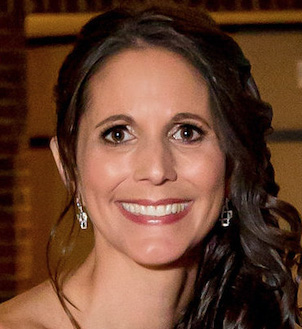
Lisa Jacknow spent years working in national and local news in and around New York City before moving to Princeton. Working as both a TV producer and news reporter, Lisa came to this area to focus on the local news of Mercer County at WZBN-TV. In recent years, she got immersed in the Princeton community by serving leadership roles at local schools in addition to volunteering for other local non-profits. In her free time, Lisa loves to spend time with her family, play tennis, sing and play the piano. A graduate of the S. I. Newhouse School of Public Communications at Syracuse University, Lisa was raised just north of Boston, Massachusetts but has lived in the tri-state area since college. She is excited to be Editor and head writer for Princeton Perspectives!
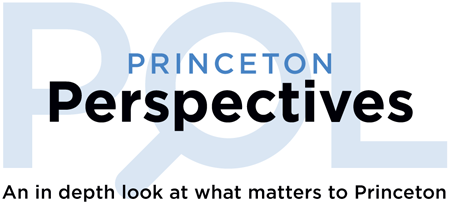
 New Jersey is one of two states in the nation that holds its election for governor the year after a Presidential election. And in 2025, after two terms leading the Garden State, Phil Murphy must step aside. This opening has led many to throw their hats into the ring, with six Democrats and five Republicans on the Primary Election Day ballots. On June 10th (or before through Vote-by-Mail and Early Voting), all registered Democrat, Republican and Unaffiliated (with a declaration at the polls) voters can weigh in to help determine the final two Major Party candidates that will go head-to-head in the General Election. (You can read more about registering, who can cast your votes and where, District 16 and all other candidates
New Jersey is one of two states in the nation that holds its election for governor the year after a Presidential election. And in 2025, after two terms leading the Garden State, Phil Murphy must step aside. This opening has led many to throw their hats into the ring, with six Democrats and five Republicans on the Primary Election Day ballots. On June 10th (or before through Vote-by-Mail and Early Voting), all registered Democrat, Republican and Unaffiliated (with a declaration at the polls) voters can weigh in to help determine the final two Major Party candidates that will go head-to-head in the General Election. (You can read more about registering, who can cast your votes and where, District 16 and all other candidates 










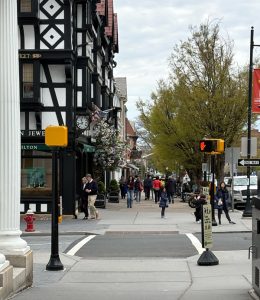 There’s a common saying: a compromise is good when both parties are unhappy. But no one wants to live life with constant unhappiness. So, often when decisions are made within a community, they are done so with the best intensions in mind – hoping to solve a problem and create a better situation for most. Sometimes the actions lead to fallout that was not expected.
There’s a common saying: a compromise is good when both parties are unhappy. But no one wants to live life with constant unhappiness. So, often when decisions are made within a community, they are done so with the best intensions in mind – hoping to solve a problem and create a better situation for most. Sometimes the actions lead to fallout that was not expected.

